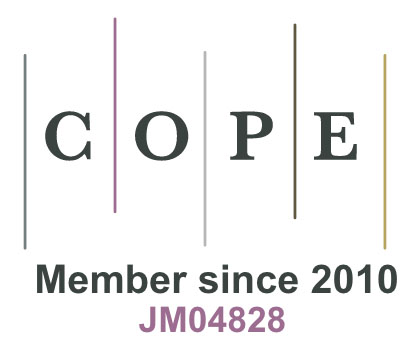Teen mothers – twenty years later!

We are delighted to include in the current issue of ANS a long-term follow-up study of teen mothers. The article, titled “Teen Mothers at Midlife: The Long Shadow of Adversarial Family Caregiving” by Lee SmithBattle, PhD, RN and Victoria Leonard, PhD, RN, APRN, is a rare examination of evolving multi-generational relationships in the lives of teen mothers who participated in a study 21 years ago, when their infants were in the first year of life.
Teenage girls have been having babies for a very long time. My own mother had me when she was 19 years of age. Because she
was married to my 18 year old dad, and because marriage provided a passage to adulthood for many young couples of my parents’ generation, teenage pregnancies were not an issue, even though many marriages were hastily arranged to conceal a premarital conception. As “shotgun marriages” declined, other practices emerged to conceal or punish pregnant, unwed teens. White girls were spirited away to maternity homes to give birth and to be “rehabilitated” for their sexual transgressions. They were also forced to relinquish their babies for adoption. A teenage girl in my own neighborhood shared this fate; she unexpectedly disappeared and returned home months later with no word of what had happened (and certainly no baby in tow).
Maternity homes, however, excluded black teens, so as shotgun marriages declined, black teens gave birth and raised their children with family help. A decade later, in the late 70s, as white and black teens, like older low-income women, began to keep their babies as single mothers, they faced a lot of public ostracism and scientific scrutiny. It was in this context that I began visiting pregnant and parenting low-income women as a new public health nurse. My parents’ working class background could not have differed more from the disadvantaged families I visited, but public health nursing practice, in the grand tradition of Lillian Wald, Myra Breckinridge, and Margaret Sanger, taught me important lessons about social inequalities and perverse policies, and being humble, curious, and open to experiences that differed from my own. (As an aside, these lessons are beautifully brought to life in Call the Midwife, a television series produced in the U.K. which is currently airing on public television in the US). In the late 70s, scientific discourse on teen mothers was just beginning, and the media reports and scientific literature on teen mothers were difficult to reconcile with what I was learning from the families I visited as a PHN. Yes, the teens on my caseload were not going to graduate from high school, but this was not for lack of interest or motivation but because high schools excluded them.
Perinatal and social outcomes could be worse for teen mothers than older mothers, but were often comparable when teens had access to resources and good health care. And teens who had the help and support of family members seemed to have advantages that older mothers sometimes lacked when they were bereft of partner and family support. Making sense of these issues was a strong motivating factor for me to return to graduate school.
I began this study two decades ago. When I left the homes of the teen mothers after conducting the final interviews in 1989, I never expected to see the families again, so the final good-byes brought a sense of loss. After all, I had spent close to 25 hours in each home over a 3 month period, interviewing teen mothers and family members, and hanging out in their kitchens, living rooms, and bedrooms, observing daily life with babies to tend to. I attended birthday parties, picnics, and other family events, and also participated in mundane activities like folding laundry. Vivid memories of some of the initial visits are still etched in my memory. I suppose it was these memories, as well as my curiosity about how their lives might unfold, that led me to the second study, and then the third, fourth, fifth, and sixth. Other researchers apparently have also found it difficult to end relationships with study participants; for example, Rochelle Dalla has followed a group of teen mothers on a Navajo reservation for more than 12 years. Frank Furstenberg finally ended his remarkable study of teen mothers after 30 years. I wonder how he managed to do it. George Elliot’s (1964) words capture why I will embark on the seventh study in a couple more years:
“Every limit is a beginning as well as an ending. Who can quit young lives after being in long company with them, and not desire to know what befell them in their after-years? For the fragment of a life, however typical, is not the sample of an even web: promises may not be kept, and an ardent outset may be followed by declension; latent powers may find their long-waited opportunity; a past error may urge a grand retrieval.” (Eliot, G, 1964. Middlemarch. New York: Signet.
An impressive number of qualitative studies on teen mothers (and a growing number on teen fathers) are published every year, and this work continues to challenge our assumptions and stereotypes of teen mothers and the perverse ways that social
inequities and childhood adversities shape the lives of U.S. children. Equally important, quantitative studies that control for teen mothers’ background factors confirm the long arm of social disadvantage, showing that teen mothers do about the same on a range of outcomes as older women from similar backgrounds. Stereotypes and assumptions die hard, however, especially when sex, poverty, and race are part of the mix.
In addition to the families who welcomed me into their homes, other relationships have nurtured this research. I have had the best and most generous mentors. Edna Dell Weinel always demonstrated public health nursing at its finest and Patricia Benner modeled how to listen closely and with deep respect for various voices in the text. Vickie Leonard, the co-author of this paper, has
been a fellow traveler on this study from the time we began our first semester as doctoral students together. Because Vickie’s dissertation focused on older mothers with career commitments, pouring over our interviews and sharing stories from our respective families provided a rich comparison for how social worlds set up different and similar meanings, practices, and ways of being a mother. With each follow-up study, Vickie has read several cases to help clarify and refine my interpretations. Every researcher should be so lucky. The artwork accompanying this blog was created by Hilda Robinson, a dear friend and artist in Oakland, California, who turned the family stories of my dissertation into these and other paintings.
Finally, I would like to applaud Advances in Nursing Science for its commitment to publishing the lengthy papers that qualitative research requires. Amid the general press in nursing journals to publish short, empirically-based studies, ANS has courageously provided a home for scholarly qualitative work. ANS published my very first paper from Time 1, and then others along the way. Longitudinal studies are rare in nursing, and I’ve been fortunate that ANS has always welcomed a diversity of philosophical approaches and study designs. Nursing has been enriched by the courage of ANS’s editor and reviewers.
Visit the ANS web site while this article is featured to download and read this article at no cost. We welcome your comments here – we will respond!






